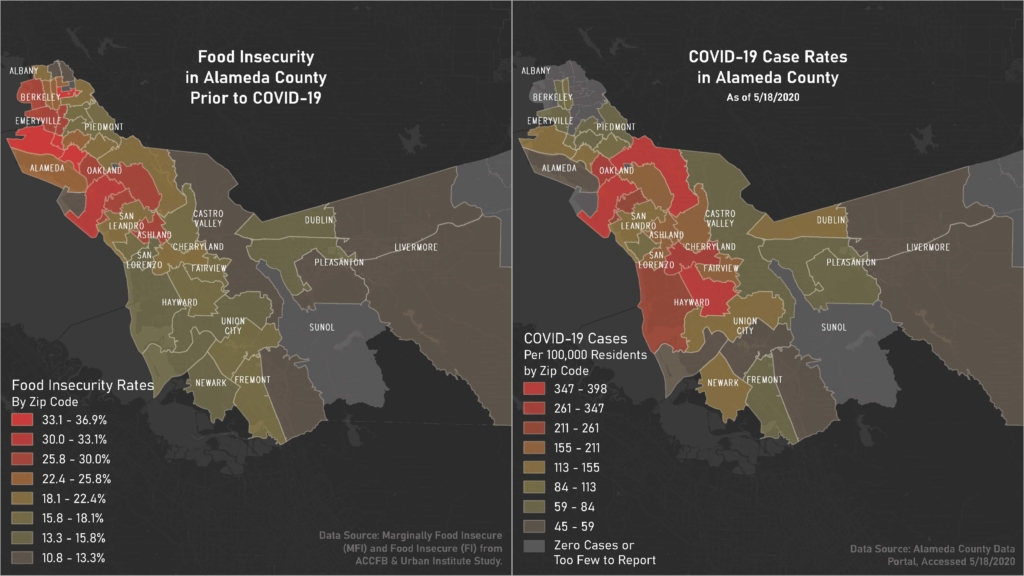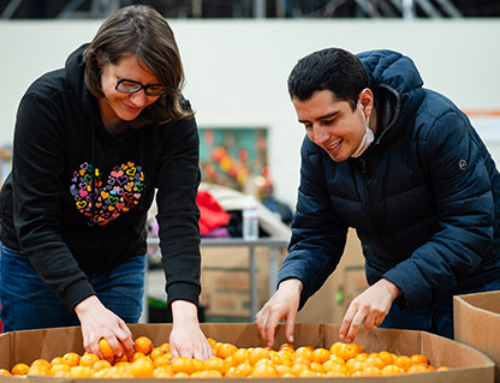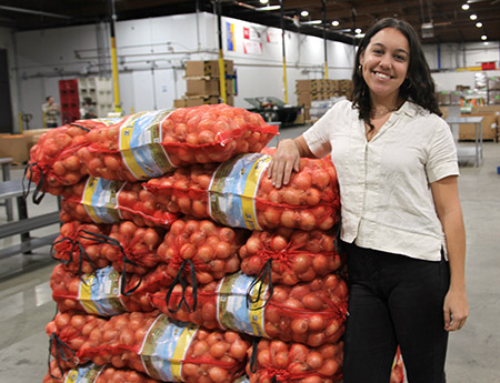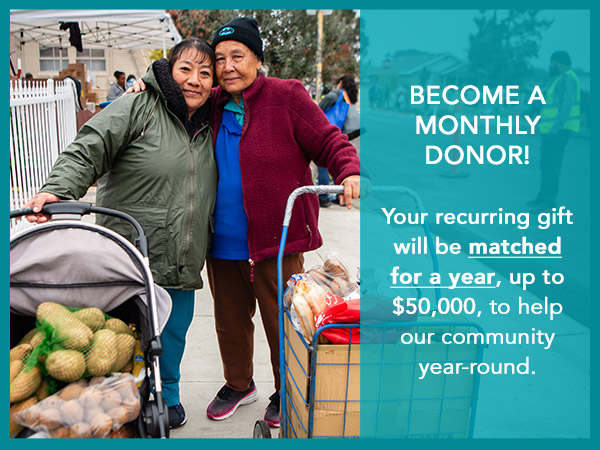By Christiana Oatman, Development Assistant
As data on COVID-19 emerges, it’s clear that Communities of Color are being hit harder by the pandemic in Alameda County.
Take a look at these maps created by our Research Team. One highlights food insecurity in the county and the other show COVID-19 cases.

The maps look unsurprisingly similar. The COVID-19 pandemic shines a light on the already-existing intersection of race, health, and food insecurity. East Oakland – our home and the location of our largest drive through distribution – is undeniably the area with the most overlap between COVID-19 rates and food insecurity.
Because of deliberate policies that lead to disproportionate hunger, poor health, and economic outcomes for Communities of Color, race is an indicator of food insecurity.
In Alameda County, 7 in 10 community members who are living in poverty are people of color.
Numerous studies show a clear link between race, class, and health disparities. Disease is not an equalizer; disease disproportionately infects low-income and POC communities.
There’s even more data to back this up. Startling statistics were recently presented at the City of Oakland Racial Disparities Task Force Town Hall: in Alameda County, Latinx make up 22% of the general population, and 46% of the COVID-19 caseload. African-Americans make up 10% of the general population, and 14% of COVID-19 cases.
Race, equity, and inclusion are at the forefront at our work – especially during our COVID-19 emergency response. We are constantly monitoring the needs of our community and jumping into action. Every day, our Helpline is referring hundreds of neighbors to sites where they can pick up groceries or get a hot meal, and we’re helping more people than ever apply for CalFresh.
In March, 68% of CalFresh recipients were People of Color. Applications to this critical anti-hunger program are up 55% from this time last year. Learn more about the program, who qualifies, and how it’s impacted by COVID-19.
We’re scaling our efforts to meet the need by opening new distribution sites in East Oakland and Hayward – two of the hardest hit areas – to provide much-needed food. Throughout the County, our passionate and dedicated partner agencies are distributing groceries to anyone who needs them. And, we’re providing more food than ever before – averaging about a million pounds a week.
Join us in creating a stronger community. One with racial and economic equity. One where all of us works together to end hunger. In this unprecedented crisis, the road feels very long – but we know we can get there together.




